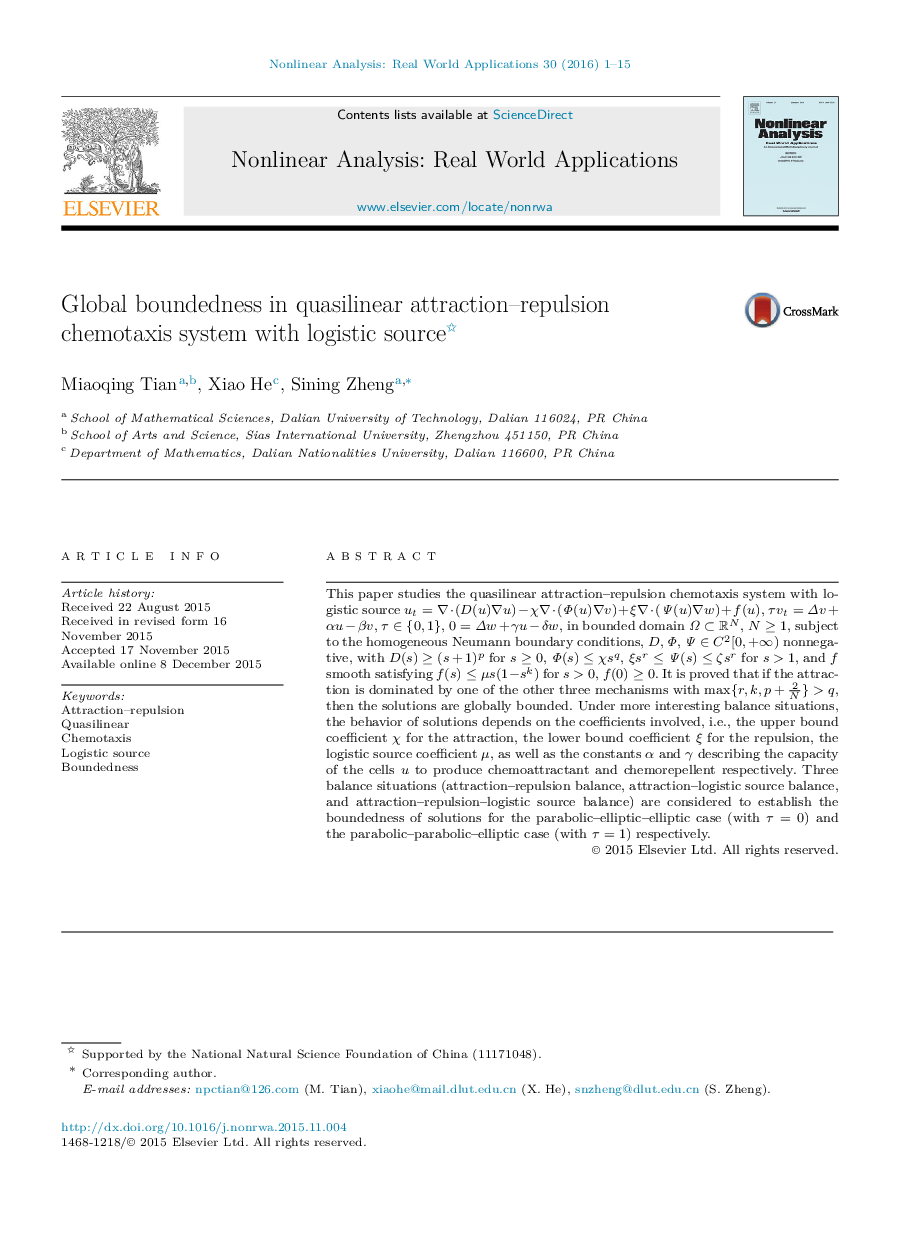| Article ID | Journal | Published Year | Pages | File Type |
|---|---|---|---|---|
| 837000 | Nonlinear Analysis: Real World Applications | 2016 | 15 Pages |
This paper studies the quasilinear attraction–repulsion chemotaxis system with logistic source ut=∇⋅(D(u)∇u)−χ∇⋅(Φ(u)∇v)+ξ∇⋅(Ψ(u)∇w)+f(u)ut=∇⋅(D(u)∇u)−χ∇⋅(Φ(u)∇v)+ξ∇⋅(Ψ(u)∇w)+f(u), τvt=Δv+αu−βvτvt=Δv+αu−βv, τ∈{0,1}τ∈{0,1}, 0=Δw+γu−δw0=Δw+γu−δw, in bounded domain Ω⊂RNΩ⊂RN, N≥1N≥1, subject to the homogeneous Neumann boundary conditions, D,Φ,Ψ∈C2[0,+∞)D,Φ,Ψ∈C2[0,+∞) nonnegative, with D(s)≥(s+1)pD(s)≥(s+1)p for s≥0s≥0, Φ(s)≤χsqΦ(s)≤χsq, ξsr≤Ψ(s)≤ζsrξsr≤Ψ(s)≤ζsr for s>1s>1, and ff smooth satisfying f(s)≤μs(1−sk)f(s)≤μs(1−sk) for s>0s>0, f(0)≥0f(0)≥0. It is proved that if the attraction is dominated by one of the other three mechanisms with max{r,k,p+2N}>q, then the solutions are globally bounded. Under more interesting balance situations, the behavior of solutions depends on the coefficients involved, i.e., the upper bound coefficient χχ for the attraction, the lower bound coefficient ξξ for the repulsion, the logistic source coefficient μμ, as well as the constants αα and γγ describing the capacity of the cells uu to produce chemoattractant and chemorepellent respectively. Three balance situations (attraction–repulsion balance, attraction–logistic source balance, and attraction–repulsion–logistic source balance) are considered to establish the boundedness of solutions for the parabolic–elliptic–elliptic case (with τ=0τ=0) and the parabolic–parabolic–elliptic case (with τ=1τ=1) respectively.
